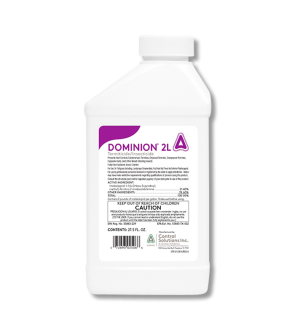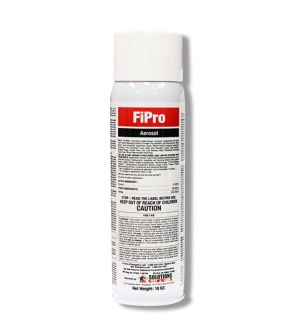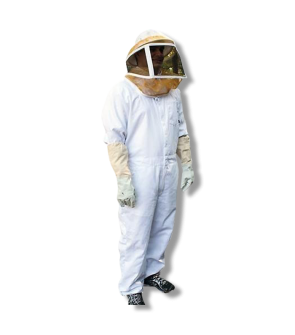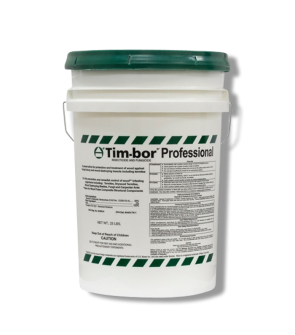Carpenter Bees Vs. Bumblebees
Most Effective Products
Carpenter Bee Vs. Bumblebee: Easy Ways to Differentiate Between Pests
This page is a general DIY guide for identifying the difference between carpenter bees and bumblebees. Follow this guide and use the recommended products to control carpenter bee infestations and avoid killing beneficial pollinators such as bumblebees.
Large bee infestations can pose health and safety risks, but not all bees can be treated the same. When most homeowners think of bees, they all think that these pests fall in the same category. These fairly round, yellow and black fuzzy insects that produce honey do not really bother most people unless you are close to their nests. Usually, most homeowners encounter the bumblebee buzzing through the yard and garden.
However, not all bees you see buzzing around your flowers are bumblebees. Carpenter bees have a similar appearance to bumblebees, but are viewed more as a pest due to their wood destroying activities. They also do not belong to the honey-producing category as bumblebees since no carpenter bees produces honey.
As bumblebees act as significant pollinators for our crops, flowers, and trees it would be beneficial to learn how to separate the most common bee species bumblebees and carpenter bees apart in this DIY guide. Before taking action to get rid of bees such as carpenter bees you could learn additional information as to how to protect pollinators in this attached link.
How to Tell A Carpenter Bee From A Bumblebee

You will first need to know the similarities and differences in the appearance between carpenter bees and bumblebees. Though these insects share many features they can be told apart by certain physical features.
For a physical example, take a look at the image above. On the left is a bumblebee and on the right is a carpenter bee.
Hair
Bumblebees: Head, thorax, and abdomen are all hairy giving them a soft and fluffy look. These hairs help to collect the pollen from plants to promote pollination.
Carpenter Bees: Like bumblebees they also have hair, with the exception that it is not as thick and only covers its thorax. Their smooth abdomens are hairless.
Size
Bumblebees: measure about 3/4 inches in length.
Carpenter Bees: Are slightly larger than bumblebees in size anywhere from 3/4 to 1 inch in length.
Color
Bumblebees: They have the yellow and black striped pattern you would expect of any bee.
Carpenter Bees: Are mostly black, but some species have a yellow thorax.
Where Do Carpenter Bees and Bumblebees Nest

Bumblebees live in underground nests, usually ones that are already made and abandoned by other pests like rodents. They can also be found in undisturbed voids within shaded areas such as between rocks, under sheds, or aboveground in empty bird nests, and long grass.
As social pests, bumblebees live in colonies with a single queen. Their colony members form wax cells in large clumps to build honey pots, egg coverings, and for nesting material.
Unlike bumblebees, carpenter bees are solitary pests often nesting in and around the eaves and exterior of homes, in fence posts or on the underside of patio wood such as porches, decks, or rails. Wooden furniture outside of your home on your patio can also be succumbed to carpenter bees. While they do not consume wood, they burrow into it.
Their damage to wooden surfaces is generally minor unless a significant number of them create numerous tunnels over time, resulting in half-inch diameter holes that lead to galleries used for egg laying, pollen, and nectar storage.
Do Carpenter Bees Sting

Most bee species are often known for their ability to sting only once, but this rule does not apply to bumblebees and carpenter bees. Carpenter bees and bumblebees have smooth stingers, allowing them to sting multiple times without dying.
Usually these bees are pretty docile, they will only sting when they feel their nest is threatened and give a warning beforehand by flying near the attacker or with carpenter bees releasing a buzzing sound.
Male bumblebees cannot sting due to their lack of a stinger, but the females can. Similar to bumblebees, only female carpenter bees can sting. However, the females rarely venture out of the galleries to pose such a threat.
Are Carpenter Bees Considered Pollinators

Something that both bumblebees and carpenter bees share is their unique way to pollinate plants. Using their legs, both of these bees will grab onto a flower then emit strong vibrations this is known as buzz pollination. Although carpenter bees help to pollinate flowers they do not make honey like the bumblebees.
Allowing carpenter bees to inhabit and live in your property can lead to beneficial pollination, but they will cause wooden damages to the exterior of your home and other structures in your yard.
Key Takeaways
How to Get Rid of Carpenter Bees?
- Since bumblebees are an important pollinating insect, we will only go over how to get rid of carpenter bees. To treat an active carpenter bee infestation, use a product like FiPro Foaming Aerosol. FiPro is an expanding fipronil-based product that leaves a long-lasting, undetectable residual barrier. Just inject the foam directly into the holes the carpenter bees have created. To stop future infestations, use Dominion 2L. Dominion 2L is a suspended concentrate made with imidacloprid. Mix and apply this product at the labeled rate of 0.3 to 0.6 fluid ounces per 1 gallon of water. Spray wooden structures on your property and wherever else you’ve seen galleries, then allow the product to dry completely. This product will prevent the infestation of treated areas for up to 3 months.
What's the Difference Between a Carpenter Bee and a Bumblebee
- Bumblebees have a hairy abdomen with some yellow markings whereas the carpenter bees hair mainly covers its thorax and its abdomen is hairless. In behavior, the bumble bee lives in fairly large colonies working to together to create honey, and a sustainable hive while the carpenter bee are solitary pests then spend a majority of its time tunneling through wooden surfaces to feed its larvae and lay eggs.
How to Prevent Carpenter Bees?
- Prevent carpenter bees from returning to your property by applying Dominion 2L or treating labeled wooden surfaces with Tim-Bor Professional Insecticide for a more natural alternative.















































































































































































































































































































































































































































































































































